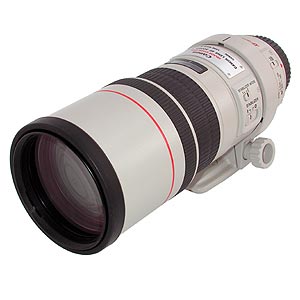Featured below are a selection of KEH Camera's "most wanted" bodies, lenses and accessories. We are actively looking to purchase these items, so if you have them, we want to buy them!
In addition to the Fuji GA645I Pro 60 f4 camera pictured, we are also actively seeking several other Fuji medium format cameras. Please see below for a complete list.
To sell any of the above featured items (or if you have other gear you'd like to sell), please call us at (770) 333-4220 or (800) 342-5534. We are currently offering top market value for your clean, used gear. As a bonus, if you send us your equipment, we'll pay for shipping! Turnaround time is typically 24-48 hours once your equipment arrives in-house. Once you approve our offer, we'll send you a check. It's that easy!![]()
The lens pictured is a 45-90 f4.5 Vario-Sonnar T*, but we are actively seeking all Contax 645 auto focus zoom & fixed focal length lenses.
The finder pictured is an MF-2 waist level finder, but we are actively seeking all Contax 645 auto focus finders.
In addition to the Fuji GA645I Pro 60 f4 camera pictured, we are also actively seeking several other Fuji medium format cameras. Please see below for a complete list.
In addition to the Rolleiflex 2.8 GX camera pictured, we are also actively seeking several other Rollei cameras. Please see below
for a complete list.
In addition to the Widelux F8 camera, we are also actively seeking the Widelux F7 panoramic camera.
In addition to the Yashica Mat 124, we are also actively seeking the Yashica Mat 124G camera.
As well as the photographic equipment featured above, we are also looking to purchase the following gear:
* 4x5 Wooden Field Cameras (Late Models)
* Fuji GA645S Pro 45 f4 Medium Format Fixed Lens Camera
* Fuji GA645W or WI Pro 45 f4 Medium Format Fixed Lens Camera
* Fuji GF670 80 f3.5 Medium Format Fixed Lens Camera
* Fuji GL690 100 f3.5 Medium Format Fixed Lens Camera
* Fuji GSW690III Pro 65 f5.6 Medium Format Fixed Lens Camera
* Fuji GW680III 90 f3.5 Medium Format Fixed Lens Camera
* NPC 195 Rangefinder Camera
* Polaroid 180 Land Camera
* Polaroid 195 Land Camera
* Polaroid 600 SE Camera
* Rolleiflex 2.8 E3 TLR Manual Focus Fixed Lens Camera w/ Waist Level
* Rolleiflex 2.8 E2 TLR Manual Focus Fixed Lens Camera w/ Waist Level
* Rolleiflex 2.8 F TLR Manual Focus Fixed Lens Camera w/ Waist Level
* Rolleiflex 2.8 FX TLR Manual Focus Fixed Lens Camera w/ Waist Level
* Rolleiflex 3.5 F TLR Manual Focus Fixed Lens Camera w/ Waist Level
* Rolleiwide TLR Manual Focus Fixed Lens Camera w/ Waist Level
* Telerollei TLR Manual Focus Fixed Lens Camera w/ Waist Level
* Rolleiflex 2.8 E2 TLR Manual Focus Fixed Lens Camera w/ Waist Level
* Rolleiflex 2.8 F TLR Manual Focus Fixed Lens Camera w/ Waist Level
* Rolleiflex 2.8 FX TLR Manual Focus Fixed Lens Camera w/ Waist Level
* Rolleiflex 3.5 F TLR Manual Focus Fixed Lens Camera w/ Waist Level
* Rolleiwide TLR Manual Focus Fixed Lens Camera w/ Waist Level
* Telerollei TLR Manual Focus Fixed Lens Camera w/ Waist Level
To sell any of the above featured items (or if you have other gear you'd like to sell), please call us at (770) 333-4220 or (800) 342-5534. We are currently offering top market value for your clean, used gear. As a bonus, if you send us your equipment, we'll pay for shipping! Turnaround time is typically 24-48 hours once your equipment arrives in-house. Once you approve our offer, we'll send you a check. It's that easy!












































































































